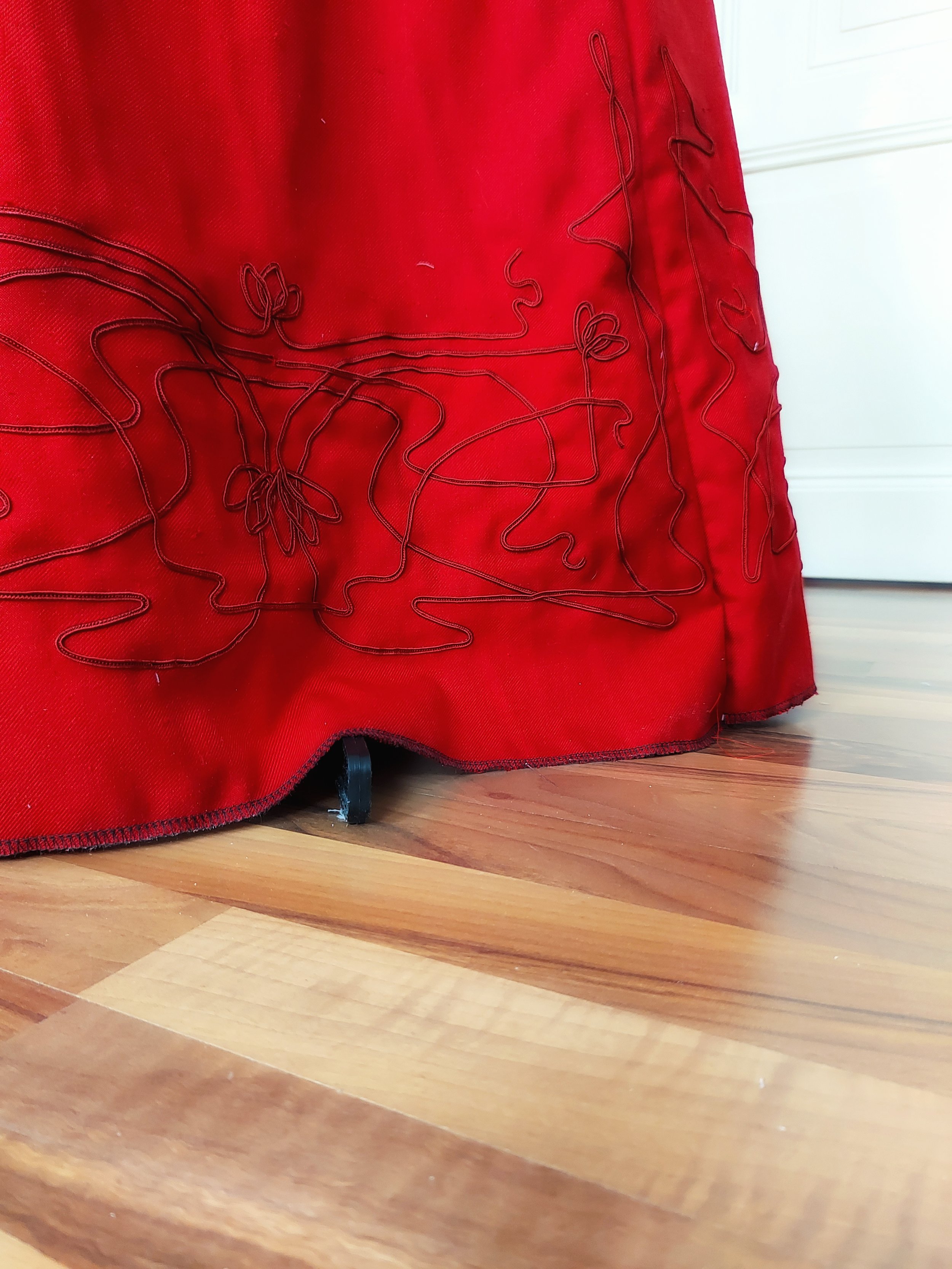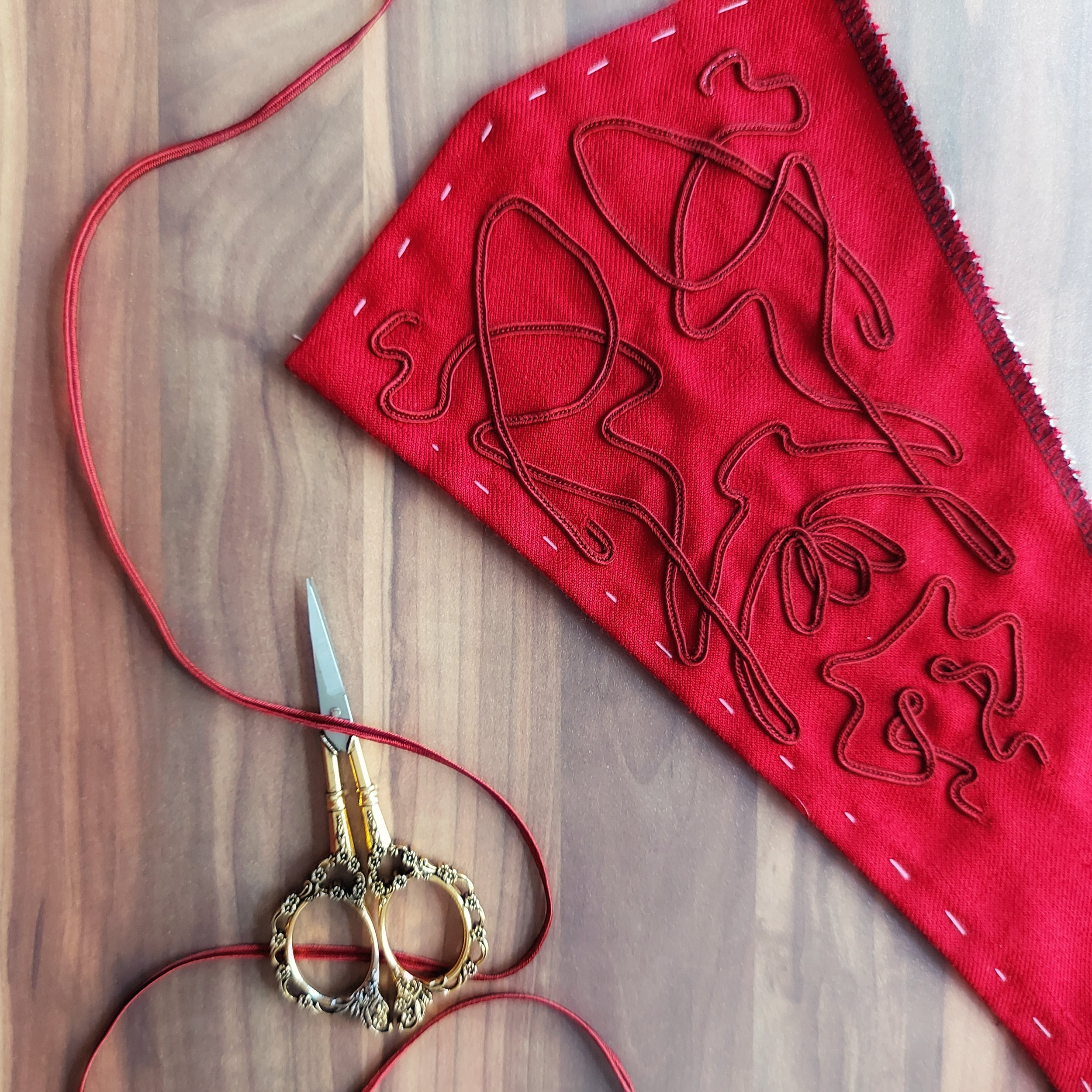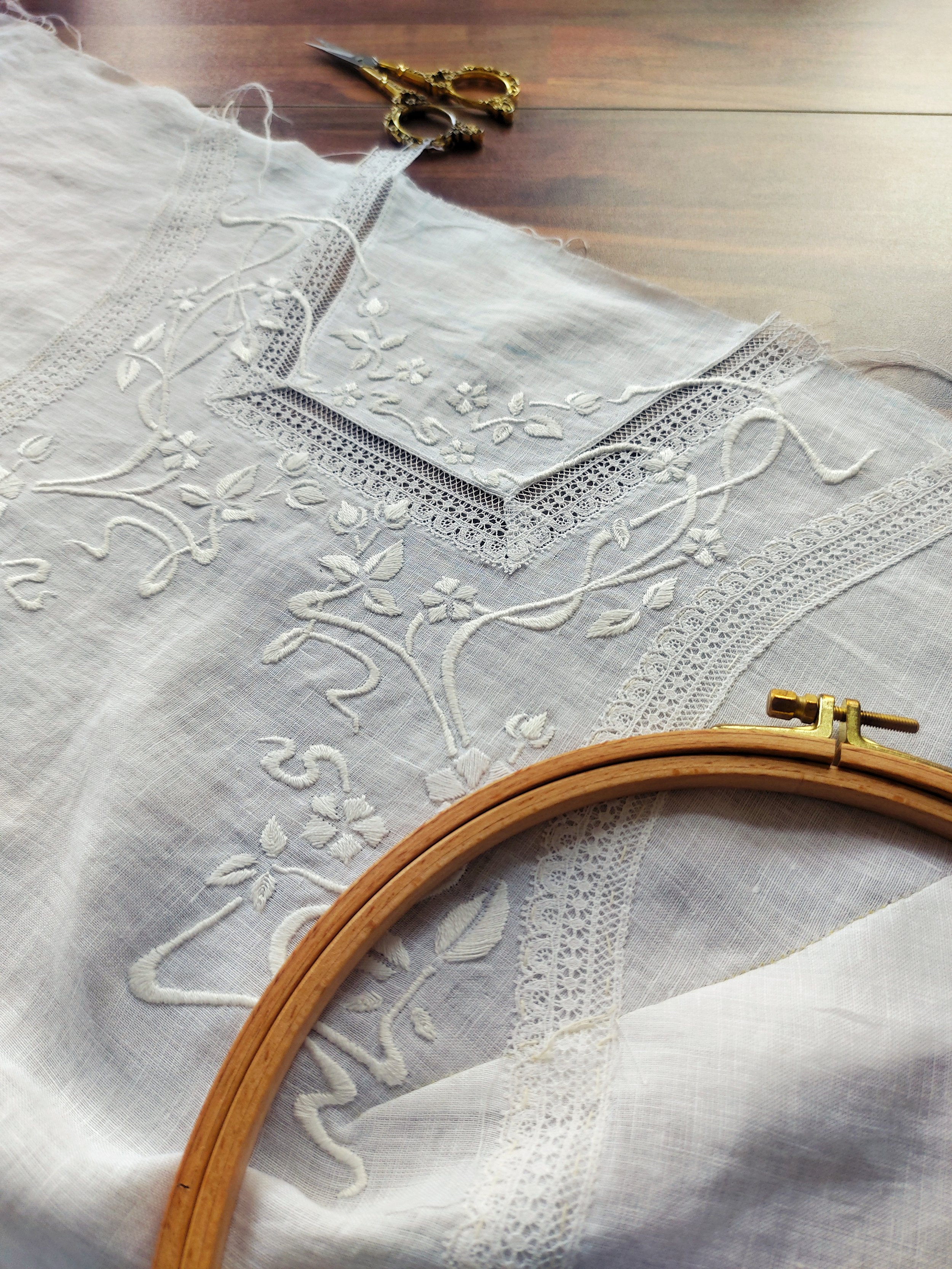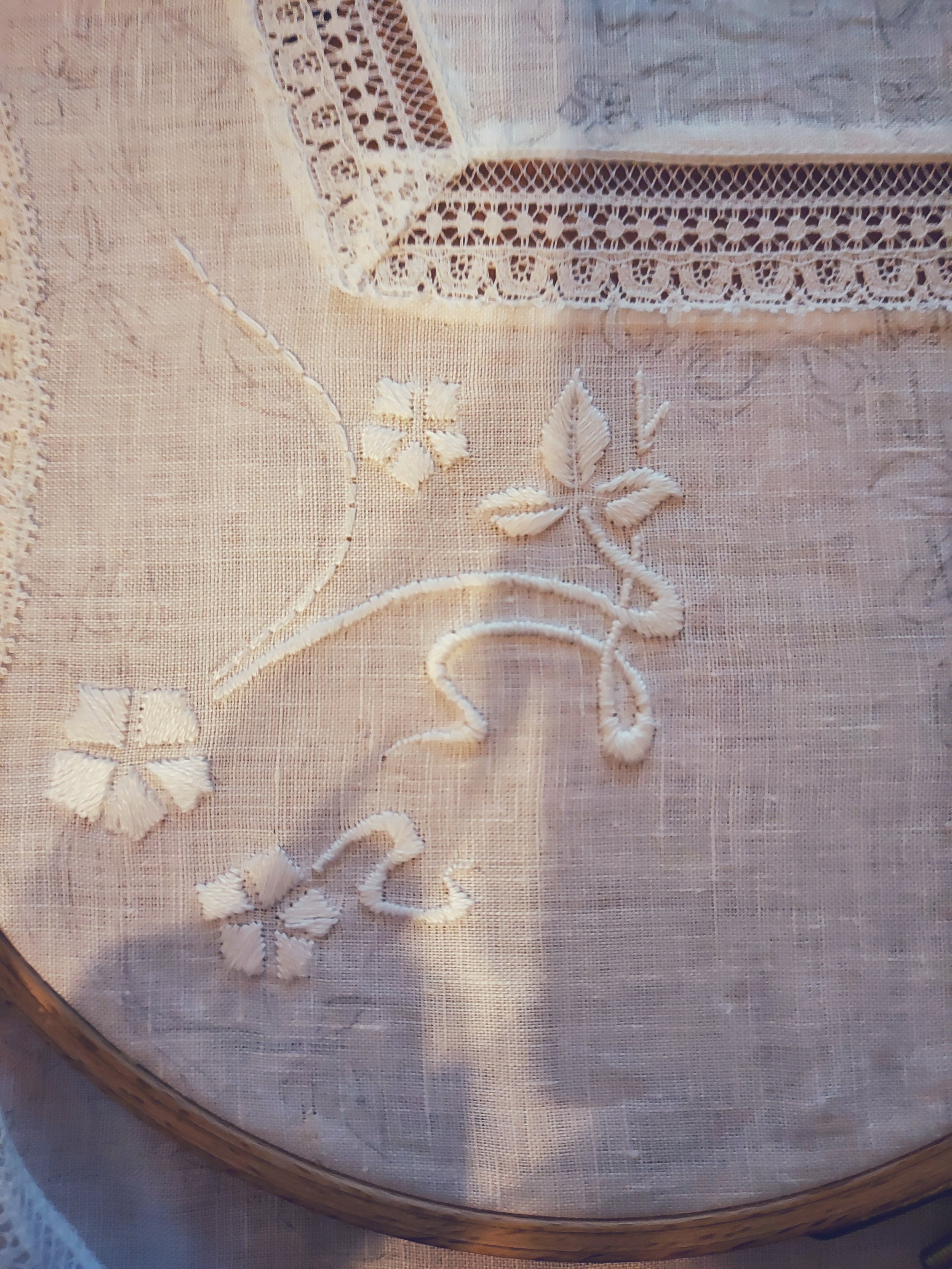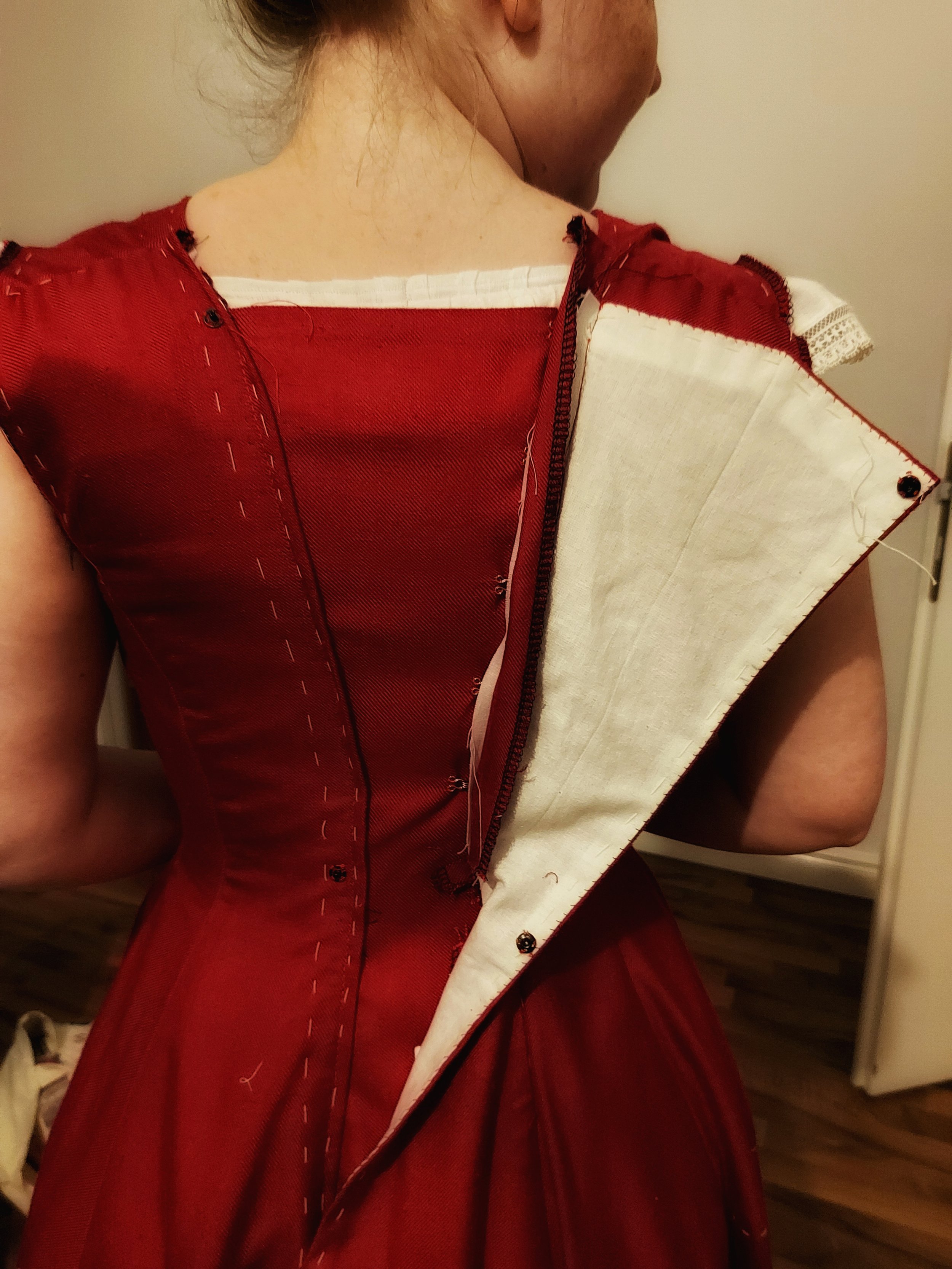
The Red Dress
1906 daydress
I have always been in love with the bold elegance of the very early 20th century. The silhouette of the edwardian era, of these few years between 1900 and 1909, just has something so sophisticated and grown up while being soft and light at the same time. What I want to say - I wanted to recreate a dress from this era for a long time, but I always knew if I did I it needed to be big. Not big in size but big in detail. Honestly, embelishing dresses with needless decoration has always been the part in sewing I enjoy the most. Be it folding rows and rows of trim or spending hours on embroidery. And what would fit better to a 1906 dress than taking inspiration from Art Nouveau design itself? To integrate the flowing lines found in Art Nouveau Art and Architecture I tried a new thing: Soutache trim. Never done it before, probably went overboard right away.
Including all the underpinnings this outfit took me over a year, with lots of breaks of course but all in all the longest I have ever worked on a single sewing project. For a time I thought I would never finish this. I am very glad I did. Now I just have to find a reason to wear this at some point.
The dress is made of a beautiful red bourette silk that honestly feels more like wool then silk to work with. I bought this fabric online and it was listed as a “berry red”. I expected something more pink but I am very happy it turned out to be this bright, bold shade of pure unapologetic red. A color that to me fits very well with the general line of the early 20th century fashion.
In addition to the dress I also created a white linen blouse that features some lace insertion, pintucks on the sleeves and whitework embroidery. All the embroidery was done by hand and did add a couple more weeks, if not months to the project. I did decide to make this blouse completly seperate as a second piece of clothing even though I found a lot of historical references, where this “blouse bit” at the neck is attached to the dress ifself and not in fact a seperate garment. Regardless I wanted to keep the option to wear the blouse with different combinations in my everyday wardrobe as well. This of course also meant I had to add some embroidery on the upper sleeve, which you can’t even see when it’s worn with the dress like this.
The dress closes in the back using a combination of hooks and eyes as well as snaps, which had just come into fashion at the turn of the century. In order to keep the dress sinched in at the waist I also added in a small waistband on the inside. The gown itself follows a princess line, which means there is no waistseam or waistband attaching the skirt to the upper garment but rather full-length pattern pieces. I created the pattern for this dress myself mostly by draping it onto my sewing manequin.
Another thing that a functional dress of course can’t miss are pockets. I don’t know yet when I will ever wear the dress but be assured I will need a place to hide my phone while pretending to stroll around in the early 1900s.
The right underwear
One thing I adore about the early 1900s is simply the silhouette of the fashion. But I certainly don’t look like that and it turns out neither did the women back then. In order to achieve the right proportions, the matching undergarments are necessary. So before I even started on the main dress, I needed so make myself a new set of historical underwear. This included:
A straight front or s-bent corset
A petticoat, of course decorated with needless ammounts of pintucks and insertion lace
A corset cover
some padding, specifically a so called “Bust improver” and some hip and butt padding.
The corset was created following the pattern of an 1901 corset given in “Corsets & Crinolines” by Norah Waugh. For this I used a mustart yellow silk as an outer fabric and standart corset coutil as the inner layer. The edges are bound in contrasting red ribbon and I also used some matching red thread I had left over from the waistcoat embroidery adventure for the flossing.
For the petticoat and corset cover I turned once again to pinterest to find some inspiration. Since most of the petticoats from that era feature heavy decoration I also added a couple rows of pintucks and lace to my creation.
Both garments are made of plain white linen and the patterns were drafted/draped from scratch by me.


